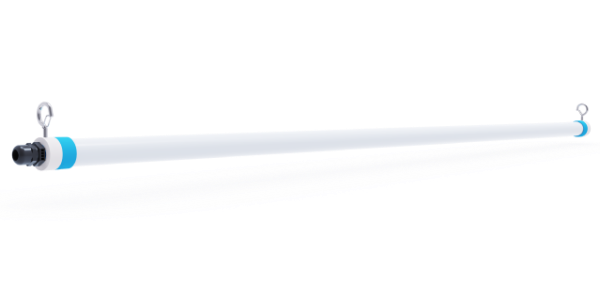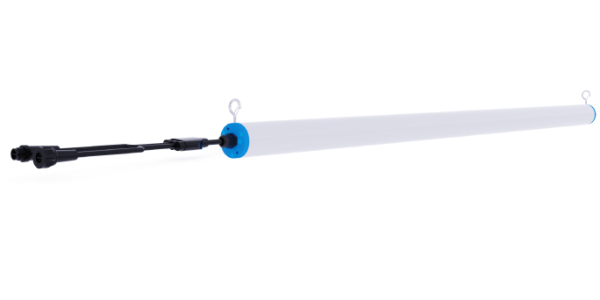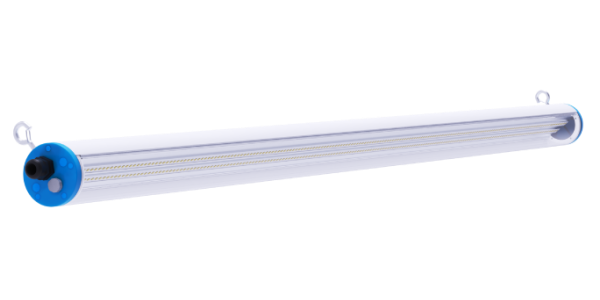Éclairage LED pour granges : un aperçu complet

Annuaire:
1. Introduction : Des granges sombres à l'éclairage intelligent
2. Pourquoi les éclairages LED pour granges remplacent-ils les éclairages traditionnels ?
3. Pourquoi choisir des éclairages LED pour une grange ?
4. Types d'éclairage LED pour granges : lequel convient à votre espace ?
5. Applications des lampes de grange Ceramiclite
6. Comment choisir le bon éclairage LED pour grange ?
7. Installation et maintenance simplifiées
8. Tendances futures : Éclairage intelligent et durable
1. Introduction : Des granges sombres à l'éclairage intelligent
Pendant des années, les granges, les écuries, les fermes et les ateliers ont été éclairés par des ampoules jaunes peu lumineuses ou des tubes fluorescents bourdonnants. Résultat ? Des coins sombres, des factures d’électricité élevées, des ampoules à remplacer constamment et même des risques pour la sécurité dus à une mauvaise visibilité.
Si vous utilisez encore des éclairages de grange traditionnels, vous connaissez probablement les problèmes : faible luminosité les matins d’hiver, zones de travail ombragées et ampoules qui grillent juste au moment où vous en avez le plus besoin.
Le changement est en marche. De plus en plus d'agriculteurs, de propriétaires d'entrepôts et de particuliers optent pour l'éclairage LED des bâtiments agricoles : une solution plus lumineuse, plus intelligente et plus efficace pour illuminer de grands espaces intérieurs et extérieurs.
Imaginez plutôt ceci :
Une grange qui s'illumine instantanément d'une clarté vive, semblable à celle de la lumière du jour.
Émission de lumière stable même dans des environnements glacials ou poussiéreux
Consommation d'énergie jusqu'à 80 % inférieure à celle des installations traditionnelles.
Des années de fonctionnement continu sans changement d'ampoule ni soucis d'entretien
C’est précisément le rôle des éclairages LED pour bâtiments agricoles . Qu’il s’agisse d’une salle de traite, d’un entrepôt à foin, d’un hangar à machines ou d’une grange de jardin, la technologie LED transforme les espaces sombres et énergivores en environnements sûrs et productifs.
Chez Ceramiclite, nous sommes spécialisés dans les solutions d'éclairage pour volailles .Conçus pour relever les défis du quotidien, nos produits allient un flux lumineux élevé, une faible consommation d'énergie, une conception robuste et étanche, ainsi que des options de contrôle intelligentes comme les lampes LED crépusculaires . Ils sont conçus non seulement pour remplacer vos anciens luminaires, mais aussi pour moderniser votre éclairage.
Plus lumineux. Plus sûr. Plus intelligent.
Voilà la promesse des éclairages LED pour granges — et Ceramiclite vous aide à la concrétiser.
2. Pourquoi les éclairages LED pour granges remplacent-ils les éclairages traditionnels ?
L'éclairage traditionnel des granges était fonctionnel, mais il n'était ni efficace, ni durable, ni vraiment sûr. Face à la hausse des coûts de l'énergie et aux exigences croissantes en matière d'éclairage, le secteur s'est posé une question simple : existe-t-il une meilleure solution pour éclairer les granges, les écuries, les entrepôts et les cours extérieures ?
C’est cette question qui a conduit au passage des luminaires halogènes et fluorescents obsolètes aux éclairages agricoles modernes à LED.
2.1 De l'halogène à la LED : qu'est-ce qui a changé ?
For decades, barns and farm buildings were lit by halogen bulbs, incandescent lamps, or fluorescent tubes. They did the job, but barely—high power consumption, constant bulb replacements, buzzing noise, dim lighting in winter, and even fire risks from overheated fixtures.
Traditional lights waste most of their energy as heat instead of usable light. That means higher electricity bills and shorter lifespans—often only 1,000 to 5,000 hours. In demanding environments like barns and warehouses, where dust, moisture, and vibrations are common, these lights fail even faster.
The shift began when LED barn lights entered the market. Unlike old fixtures, they use only a fraction of electricity—up to 70–80% energy savings—and last 5 to 10 times longer. They offer consistent brightness, even in cold barns or outdoor fields, without flickering or warm-up time. That’s why more farmers, ranchers, and industrial users are replacing outdated lights with LED lights for barn interiors and exteriors.
In short: the goal is no longer “just to light the barn,” but to do it brighter, safer, longer, and cheaper—and that’s where LED wins.
2.2 Why LED Performs Better: Simplified Working Principle
Why do LED barn lights save energy?
Instead of heating a filament like halogen bulbs or exciting gas like fluorescent tubes, LEDs use semiconductors to convert electricity directly into light. Little energy is wasted as heat, which is why LED barn lighting delivers high lumens with minimal power consumption.
Why do LEDs last longer?
LED chips can operate for 50,000–100,000 hours when properly cooled. Ceramiclite uses aluminum alloy housings and integrated heat sinks to dissipate heat efficiently, preventing LED burnout and extending lifespan.
Why are they safer?
Low heat output – reduces fire risk in barns filled with hay, dust, or wood.
Low-voltage operation – safer for humid or metal-structured barns.
No glass tubes or mercury – unlike fluorescent barn lights, LEDs don’t shatter or leak harmful chemicals.
Ceramiclite’s technical advantages include:
Die-cast aluminum heat sink for improved thermal management
High-efficiency LED drivers with surge protection
UL/CE certified components for safety and reliability
Options like dusk-to-dawn LED barn lights and motion sensor barn lighting
LEDs aren’t just a newer light source—they’re a smarter system designed for the realities of modern agriculture and industrial spaces.
3. Why Choose LED Lights for a Barn?
Switching to LED barn lighting isn’t just a trend—it’s a smart long-term investment that saves money, improves working conditions, and handles the demanding environment of farms and warehouses.
3.1 Energy Efficiency = Lower Bills
LED barn lights consume up to 70–80% less energy than halogen, fluorescent, or incandescent fixtures.
For example:
If a barn uses 20 × 200W halogen lights, total power is 4,000W.
Replacing them with 20 × 60W LED lights reduces usage to 1,200W.
At $0.12/kWh, that’s $10 saved per day (if used 10 hours/day), or over $3,500 per year.
This means most barns can achieve ROI within 1–2 years purely from energy savings.
3.2 Long Lifespan & Minimal Maintenance
LED barn lights last over 50,000 hours, far longer than halogen (2,000h) or HID lights (10,000h).
Less frequent replacements mean:
Lower labor costs, especially for high-ceiling barns or hard-to-reach areas
No disruptions to animal routines or farm operations
Fewer spare lamps and maintenance tools required
3.3 Better Light Quality & Smart Control
LEDs deliver consistent, high-quality lighting that improves safety and comfort inside barns.
High brightness & flicker-free output
CRI > 80 for more natural color visibility—important for checking animal health, feed, tools, and equipment
Compatible with dimming, motion sensors, daylight sensors, and smart control systems, allowing automatic on/off and brightness adjustment based on activity or natural light
3.4 Built for Harsh Environments
Barns are dusty, humid, and sometimes corrosive—LED fixtures are designed to withstand it.
IP54/IP65-rated for water and dust resistance
Shock-resistant and corrosion-proof housings protect against ammonia, humidity, impact from tools, or animal activity
Suitable for dairy barns, poultry houses, pig farms, hay storage areas, and warehouses
4. Types of Barn LED Lights: Which One Fits Your Space?
Different areas of a barn require different lighting types. Choosing the right fixture ensures safety, better visibility, and longer service life. Below are the most common barn lighting options and where they work best.
4.1 High Bay Lights – For Tall Barns and Workshops
✅ Best for:
Barns or workshops with ceilings above 12–15 ft
Storage barns, machinery sheds, horse arenas, dairy barns
Areas requiring strong, uniform lighting over a wide surface
⭐ Advantages:
High brightness with wide beam angle, ideal for large open areas
Mounted on ceilings or beams, saving floor space
Energy-efficient alternative to metal halide or HID fixtures
�� Ceramiclite Solution:
Ceramiclite LED High Bay Lights HB01 deliver up to 160 lm/W (±5%), 50,000+ hours lifespan
Optional UFO and linear high bay designs
0–10V dimming, motion sensor, and emergency backup available
4.2 Tri-Proof Lights – Moisture, Dust & Corrosion Resistant
✅ Best for:
Low- to mid-height barns (<12 ft)
Pig barns, poultry houses, cattle barns, feed rooms, milking parlors
Areas exposed to moisture, dust, ammonia gas, or cleaning chemicals
⭐ Advantages:
“Tri-proof” = waterproof, dustproof, corrosion-proof
Sealed IP65/IP66 housing, anti-corrosion aluminum or PC body
Easy surface or suspended installation
�� Ceramiclite Solution:
Ceramiclite LED Tri-Proof Lights come with IP66 protection, IK08 impact resistance
Anti-ammonia coating, suitable for poultry, pig, dairy environments
Available in 2ft/4ft/5ft lengths, seamless connection supported
4.3 Flood Lights – Outdoor Yards, Entrances & Security Areas
✅ Best for:
Farm entrances, parking lots, grain yards, loading zones
Exterior barn walls, perimeter security lighting
Areas that need wide coverage or motion-triggered lighting
⭐ Advantages:
Wide beam angle for open outdoor spaces
Adjustable brackets for wall, pole, or ground mounting
Improves safety and deters intruders or wildlife
�� Ceramiclite Solution:
Ceramiclite Outdoor LED Flood Lights offer up to 160lm/W, IP66 rating
Wide beam + adjustable mounting for barns, silos, and yards
Optional motion sensor, photocell, and smart timer control
4.4 LED Tube Lights – For Narrow, Mid-Low Height Areas
✅ Best for:
Barn corridors, small storage compartments, maintenance rooms
Low- to mid-height (8–12 ft) areas requiring uniform linear lighting
Replacement for traditional fluorescent tubes in existing barn setups
⭐ Advantages:
Slim design, perfect for narrow or confined spaces
Uniform light distribution, reducing shadows in walkways or work nooks
Easy retrofitting (direct replacement for fluorescent tubes), low installation cost
Energy-efficient, long lifespan (50,000+ hours) with stable performance
�� Ceramiclite Solution:
Ceramiclite LED Tube Lights offer 150 lm/W, IP67/IP69K protection options
T5/T8 models available, compatible with existing fixtures
Frosted cover for soft light, avoiding glare in walkways; dimmable options supported
5. Applications of Ceramiclite Barn Lights
Ceramiclite LED barn lights—T5, T8, T16, and T21—are designed specifically for demanding agricultural and high-humidity environments. They don’t just light up barns; they ensure animal safety, hygiene, and energy savings across modern farms and production facilities.
| LED Barn Light T5 | LED Barn Light T8 |
 |  |
| LED Barn Light T16 | LED Barn Light T21 |
 |  |
5.1 Livestock & Poultry Farms
Where they’re used:
Swine farms, cattle barns, sheep houses
Poultry, broiler, duck, pigeon, and chicken coop lighting
Livestock corridors, feeding areas, milking rooms
Pain Points Solved:
Traditional fluorescent tubes break easily, rust, or flicker in ammonia-rich barns
Moisture, dust, and manure gases shorten lamp lifespan
Poor lighting affects feeding accuracy and livestock health
Ceramiclite Solutions:
Model | Best for | Benefits |
LED Barn Light T5 | Pig and poultry houses | Slim design, IP65, anti-ammonia, uniform lighting |
LED Barn Light T8 | Cattle barns, dairy farms | Stronger housing, higher lumen output |
LED Barn Light T16 | Large open barns | Wide beam angle, easy installation on ceilings or pipes |
LED Barn Light T21 | Harsh livestock & high-ammonia spaces | Anti-corrosion stainless clips, sealed structure |
5.2 Food Processing & Cold Storage Facilities
Used in:
Meat and dairy processing rooms
Cold storage, milk cooling rooms, packaging areas
Mushroom farms, vegetable storage, feed warehouses
Why LED barn lights are ideal:
IP65+ waterproof & anti-corrosion, safe for frequent washing and disinfection
Operates reliably in low-temperature cold rooms
No glass tubes or mercury — meets food safety standards
Recommended Models:
T8 & T21 → for washable, wet processing rooms
T5 → for enclosed food packing lines
T16 → for wide-area storage or mushroom cultivation areas
5.3 High-Humidity & Chemical Environments
Typical locations:
Car washes & truck washing bays
Fertilizer rooms, chemical storage sheds
Mushroom farms, misty greenhouse tunnels
Challenges:
Constant water spray, high pressure cleaning
Corrosion from chemicals, detergents, disinfectants
Lights must be sealed, rust-proof and shock-resistant
Ceramiclite Solutions:
Model | Strength |
T21 | Best for car wash lighting, with sealed connectors & stainless steel clips |
T16 | Impact-resistant body for areas with water spray or equipment vibration |
T5/T8 | Used in mushroom or greenhouse farms with high humidity |
5.4 Storage, Feeding & Utility Areas
Applications include:
Feed storage rooms, machinery workshops
Hay sheds, equipment maintenance zones
Walkways between barns and outdoor paths
Why they work well:
High lumen output improves visibility for feeding and cleaning
Motion or daylight sensors help reduce unnecessary energy usage
Easy mounting — ceiling, pipe or wall installation
Best Matched Models:
T5 & T8 → General barns, feed aisles
T16 → Wider lighting for workshops & passages
T21 → Areas requiring highest durability & waterproof sealing
6. How to Choose the Right LED Barn Light?
Selecting LED barn lights isn’t only about brightness — it’s about matching the fixture to the building size, environment, and daily use. Below are five core factors to help buyers make the right choice.
6.1 Power, Lumens & Mounting Height
Barn Height | Recommended Wattage | Lumen Output |
3–4 m (10–13 ft) | 30W–60W LED | 3,000–6,000 lm |
4–6 m (13–20 ft) | 80W–120W LED | 8,000–12,000 lm |
6–10 m (20–33 ft) | 150W–200W LED | 15,000–25,000 lm |
Rule of thumb: Higher ceilings need higher lumens and a narrower beam angle to focus light on the floor or work area.
Replaces 250W–400W metal halide or halogen lamps while saving up to 70% electricity.
6.2 Color Temperature & CRI(3000K/4000K/5000K)
Color Temperature | Light Appearance | Best For |
3000K (Warm White) | Cozy, yellowish light | Residential barns, porches |
4000K (Neutral White) | Balanced, soft light | Stables, workshops |
5000K (Daylight White) | Bright, clear light | Industrial barns, warehouses |
CRI ≥ 80 ensures natural color visibility for livestock health check, product sorting, and safe machinery operation.
Ceramiclite offers full CCT options with selectable or fixed color temperature.
6.3 IP Rating & Durability
Environment | Minimum IP Rating |
Indoor dry barn | IP40–IP54 |
Livestock house, dust, moisture | IP65 |
Outdoor yard, rain, snow | IP65–IP67 |
Choose fixtures with anti-corrosion housing, aluminum heat sink, and UV-protected lens.
In barns, ammonia gas, humidity, and dust can damage normal lights — so sealed tri-proof or industrial-grade LED barn lights are a must.
_thumb.jpg)
